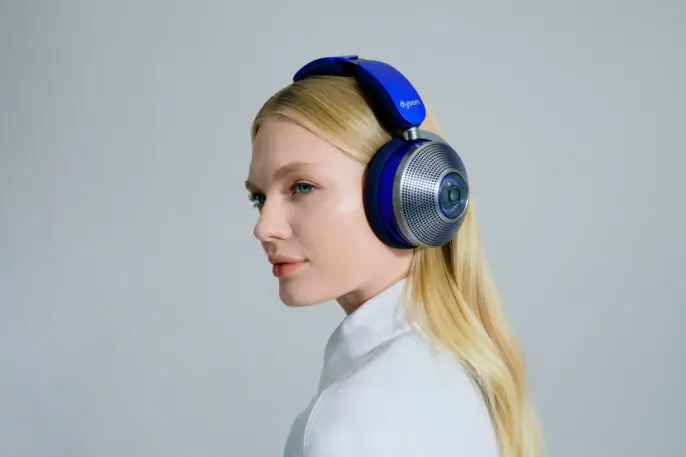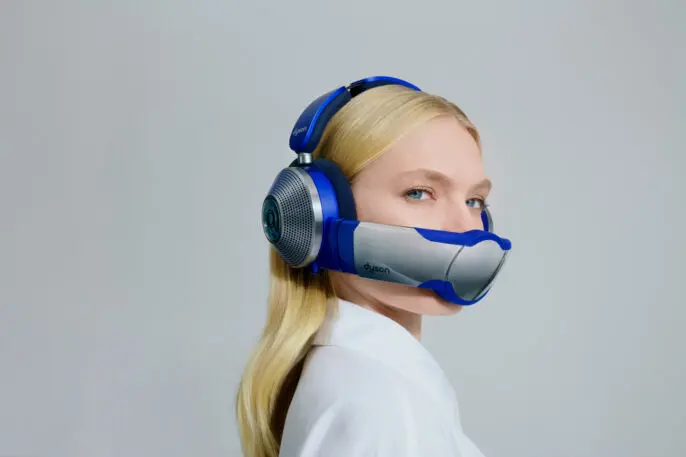In late March of last year, when Dyson announced the Dyson Zone, some believed the device—which combines noise-canceling headphones with a personal air purification system—might be an April Fool’s joke. It wasn’t. Since then, many have poked a bit of fun at the weird, high-priced tech monstrosity, including us. So, when the opportunity to try it out in person presented itself at this year’s Consumer Electronics Show (CES), it seemed only fair to give the device a shot.
After the experience, it’s clear that Dyson is, at the very least, sincere in its efforts to combat air and noise pollution—but the Zone doesn’t exactly seem destined to be a retail success once it hits U.S. stores this March, especially at its $949 price. (It first goes on sale in China later this month.)
Dyson has been working on this system for six years now. The goal was to create a device that could offer protections to people living in cities where air pollution is a significant problem. That led to the realization that noise pollution was typically an issue in those areas as well, expanding the project.
The resulting product is an awkward-looking device, to say the least—a fusion of oversize noise-canceling headphones and a Bane-like mask that hovers over your nose and mouth, pumping a continuous flow of clean air in the general vicinity of your nostrils. Weird, but not so forceful that it feels like an uncomfortable blast. In fact, the Zone handles both tasks fairly well, if you can handle the strange looks you’ll get from everyone who sees you.

Does it protect against COVID-19? Dyson’s not making that claim, but it does say it captures 99% of particles measuring 0.1 microns and larger. And the back of the filters are covered in potassium-impregnated carbon, which captures gasses, the company claims.
Those filters are said to last up to 12 months—less if you’re planning on wearing the Zone while doing a lot of stair climbing. The product calculates how frequently and heavily it has been used, based on user movement, and sends an alert via the Zone’s app.

The compressor, says David Hill, senior design manager, is the smallest Dyson has ever created. And in our trial of the device, we never felt or heard it at work, even at the highest airflow levels.
The mouthpiece doesn’t touch your face, it hovers in front of it. And the air it blows certainly seems clean. Then again, we were testing it in a suite at the Cosmopolitan on the Vegas Strip rather than outdoors in an industrial park or Times Square in a traffic jam. There, you’d get a much better sense of clean air versus exhaust fumes.
The noise-canceling properties of the Zone work, though maybe too well (more on that in a moment). You can turn the feature on and off with a quick double tap of the ear cups (which make a nice whooshing and sucking sound as you toggle between modes). Playback of music is high quality and hits the peaks and valleys you’d expect in a test environment.
Battery life? That’s a bit stickier. Dyson says the headphones alone can go 50 hours between charges—that’s without the air purifier. Turn that thing on as you listen to some tunes and you’ll see battery life drop to four hours (on the lowest airflow setting) or even 90 minutes (on the highest mode, which Dyson says people won’t use frequently).
Then there’s the noise-canceling issue with the headphones. Yes, noise pollution is certainly a problem in cities like Manhattan with its cacophony of car horns and sirens. But, as annoying as those sounds can be, completely cutting them out in a dense metro area could constitute a health hazard. Situational awareness is pretty important with that many vehicles and people nearby.
The Dyson Zone isn’t the worst invention we’ve seen. Far from it. (And having seen earlier prototypes of the Zone, the current design is certainly an improvement.) Also, Dyson’s motivations are good. But, in the real world, it’s hard to imagine the device finding any sort of traction with consumers, no matter how good a job it does.
Recognize your brand’s excellence by applying to this year’s Brands That Matter Awards before the early-rate deadline, May 3.
